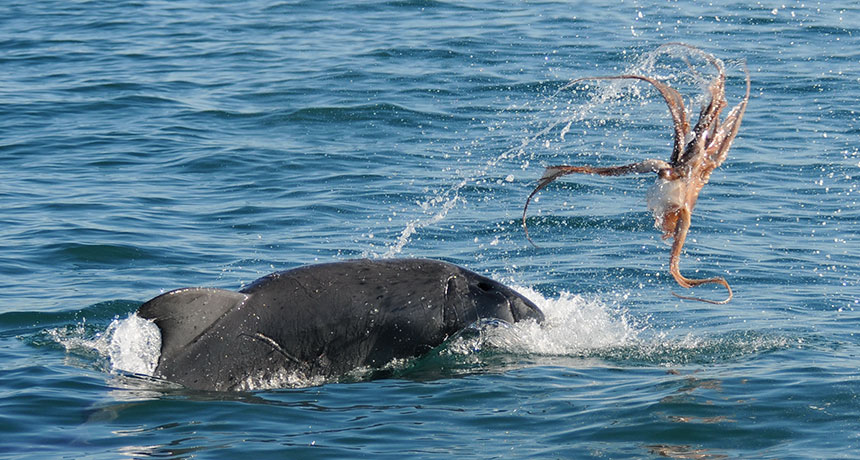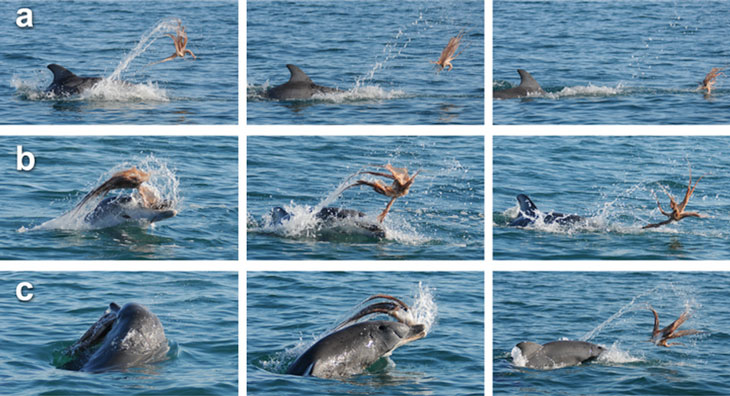Toss and slap — how dolphins disarm a dangerous meal
Tossing an octopus into the air disarms tentacles that can stick in the throat

Eating octopus can be dangerous. Some dolphins in Australia, though, have figured out how to do this safely. They shake or toss their prey over and over until it goes limp and becomes safe to swallow.
© KATE SPROGIS/MUCRU
A group of hungry dolphins off the coast of Western Australia have figured out how to eat a dangerous meal. It’s octopus. And if eaten alive, it can stick in the throat. The dolphins, though, know how to immobilize their prey, a new study finds. They shake and toss it until the head falls off, the animal is in pieces and its arms are tender and no longer wiggling.

Most people who dine on octopus also prefer it immobile. We cut it into pieces and grill or otherwise cook it. Some people do eat live octopus. They may consider the wiggly, armed entree a treat. But this isn’t a meal to be eaten carelessly. Those sucker-covered arms can stick to the throat and suffocate the diner if the entree has not first been chopped into small pieces.
Dolphins risk the same fate. “Octopus is a dangerous meal,” notes Kate Sprogis. She’s an ecologist at Murdoch University in Australia. “The suckered arms would be difficult to handle considering dolphins don’t have hands to assist them,” she says.
But Sprogis and her colleagues turned up dolphins that have figured out how to eat octopus safely. Their behavior, never before reported, was discovered during observations of bottlenose dolphins between March 2007 and August 2013. These marine mammals live in waters off of Bunbury, Western Australia. Researchers witnessed 33 events in which the dolphins used either of two techniques to turn a wriggly octopus limp. Sprogis’ team shared what it learned April 2 in Marine Mammal Science.
In one technique, a dolphin held an octopus in its mouth and shook it. The dolphin then slammed its prey into the water’s surface until the meal was in pieces. Another method involved repeatedly flinging the octopus into the air until it was ready to eat.
Story continues below image.

Each dolphin would repeat its preferred motion, or combine the two, usually around a dozen times. After several minutes of this, the battered prey was safe to eat.
“If the dolphins haven’t prepared their meal enough, then this can cause problems,” Sprogis notes. There have been two dead dolphins found in this area with whole octopuses lodged in their throats.
Dolphins have picked up a reputation for tackling difficult-to-eat foods in creative ways. Some have been spotted using cone-shaped sponges to flush out little fish from the sandy ocean floor. Others use a six-step process to prepare a meal of cuttlefish.
The Bunbury dolphins eat both octopus and cuttlefish. Those meals appear to be more common in the winter and spring, when waters are cooler, Sprogis notes. That may be when the octopus and cuttlefish breed and lose some of their camouflage. And that would make them easy prey for dolphins brave or with enough know-how to take advantage of the potential meal.







